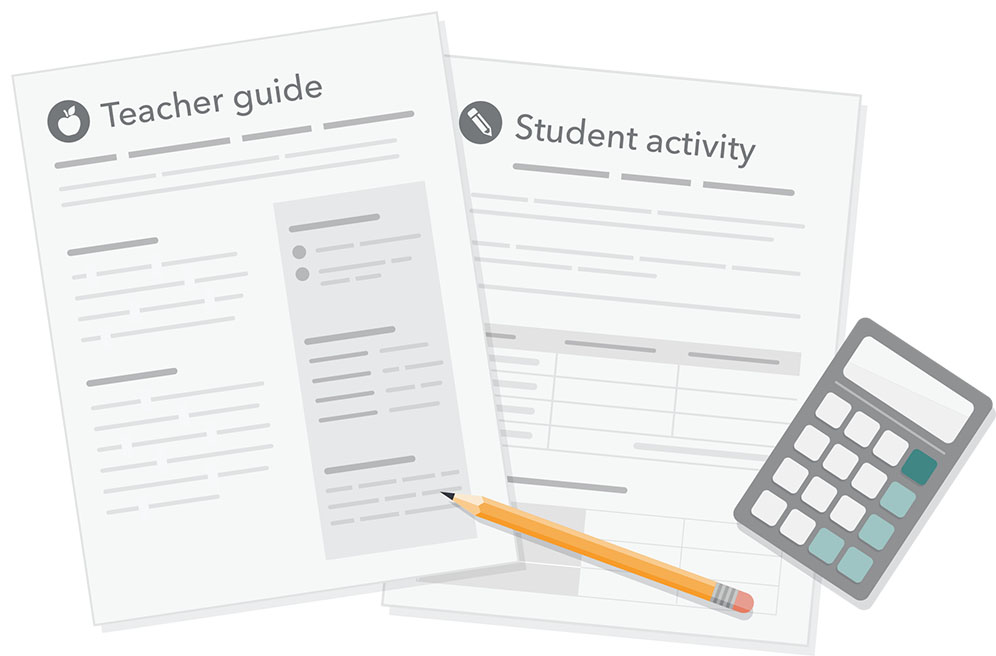Find financial literacy activities
Find activities that can help you teach and nurture the building blocks of financial capability across the curriculum.
These classroom activities can be completed within a single class period. Each activity comes with a teacher guide and supporting student material, so it’s easy to implement whether you’re an experienced personal finance teacher, integrating financial literacy into another subject area, or supplementing your existing financial education curriculum.

Search for activities
Preparing to pay for education after high school
Ideal for: Middle school (6-8)
After brainstorming ways to save for education after high school, students create a foldable that highlights ways to pay for postsecondary education.
Meeting your future self
Ideal for: Elementary school (4-5), Middle school (6-8)
Students imagine their lives in 10 years and write a fill-in-the-blank letter from their future selves to their current selves.
Bouncing ball money choices
Ideal for: Middle school (6-8), High school (9-10), High school (11-12)
Students play a game to share how they think and feel about money.
Understanding who shapes your money decisions
Ideal for: Middle school (6-8), High school (9-10), High school (11-12)
Students read a handout and then identify how both they and the people in their lives make choices about money.
Learning about budgets
Ideal for: Middle school (6-8)
Students learn about budgeting rules and then apply their understanding in an interactive budgeting activity.
Contrasting long-term and short-term savings goals
Ideal for: Middle school (6-8)
Students learn the difference between short-term and long-term savings goals and apply their knowledge in an exercise-oriented game.
Using idioms to promote saving
Ideal for: Middle school (6-8)
Students explore idioms, which are expressions that use figurative speech, to better understand financial concepts like saving and earning.
Saving and investing card game
Ideal for: Middle school (6-8)
Students play a game to learn the difference between saving and investing and explore when to save or invest.
